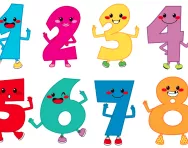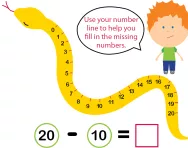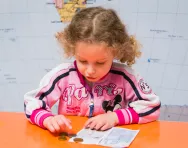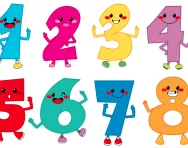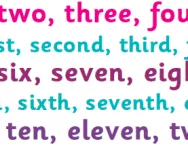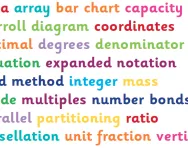Important update from TheSchoolRun
For the past 13 years, TheSchoolRun has been run by a small team of mums working from home, dedicated to providing quality educational resources to primary school parents. Unfortunately, rising supplier costs and falling revenue have made it impossible for us to continue operating, and we’ve had to make the difficult decision to close. The good news: We’ve arranged for another educational provider to take over many of our resources. These will be hosted on a new portal, where the content will be updated and expanded to support your child’s learning.
What this means for subscribers:
- Your subscription is still active, and for now, you can keep using the website as normal — just log in with your usual details to access all our articles and resources*.
- In a few months, all resources will move to the new portal. You’ll continue to have access there until your subscription ends. We’ll send you full details nearer the time.
- As a thank you for your support, we’ll also be sending you 16 primary school eBooks (worth £108.84) to download and keep.
A few changes to be aware of:
- The Learning Journey weekly email has ended, but your child’s plan will still be updated on your dashboard each Monday. Just log in to see the recommended worksheets.
- The 11+ weekly emails have now ended. We sent you all the remaining emails in the series at the end of March — please check your inbox (and spam folder) if you haven’t seen them. You can also follow the full programme here: 11+ Learning Journey.
If you have any questions, please contact us at [email protected]. Thank you for being part of our journey it’s been a privilege to support your family’s learning.
*If you need to reset your password, it will still work as usual. Please check your spam folder if the reset email doesn’t appear in your inbox.
What are ordinary numbers?
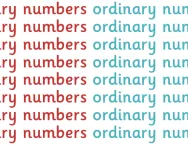
What are ordinary numbers?
Ordinary numbers are the numbers we use for counting and ordering. They start from 1 and go on indefinitely (1, 2, 3, 4, 5, 6, and so on). The number 0 is also often included in the set of ordinary numbers.

It is important to note that ordinary numbers do not include negative numbers. Negative numbers are introduced later in the maths curriculum, typically in KS2. They are used to represent quantities less than zero, such as temperatures below freezing or debts.
Ordinary numbers in the National Curriculum
Understanding and using ordinary numbers is a key part of the primary maths curriculum and starts even before children begin in the Early Years. As children progress through school, they will learn how to recognise, use and manipulate ordinary numbers of greater size. Here is a rough progression showing how their skills and knowledge will develop:
- Reception: Children start by learning to count up to 20. They learn to recognise and write these numbers and to use them to solve simple problems (like adding two groups of objects together).
- Year 1: Children learn to count up to 100, both forwards and backwards. They also start to learn about place value (the value of each digit in a number) and to use ordinary numbers in more complex problems.
- Year 2: Children learn to count up to 1000 and to use ordinary numbers in a range of contexts, including measuring lengths and weights and telling the time.
- Year 3 to Year 6: Children continue to develop their understanding of ordinary numbers, learning to use them in increasingly complex ways. This includes using them in calculations with larger numbers, fractions and decimals. They will also learn to use them to solve problems involving time, money and measurement.
How to help your child with ordinary numbers
There are many ways you can support your child's understanding of ordinary numbers at home. This is especially important as they first begin their maths learning. The more that they become comfortable with these at a young age, the more successful and confident mathematicians they will become.
Here are a few ideas of things you can try at home:
- Counting games: Play games that involve counting, like board games or card games. You could also count objects around the house, like toys or pieces of fruit.
- Number puzzles: Puzzles like Sudoku or number crosswords can be a fun way to practise using ordinary numbers.
- Real-life maths: Use ordinary numbers in real-life situations. For example, you could ask your child to help you measure ingredients for a recipe or to work out how many minutes until dinner is ready.
- Online resources: There are many online games and activities that can help your child practise using ordinary numbers. These can make learning about numbers fun and engaging.
Remember that ordinary numbers are everywhere, and the more children are exposed to these, the more confident they will become. A little practice can really help children to embed this core knowledge and help them on their way to becoming a successful mathematician!
